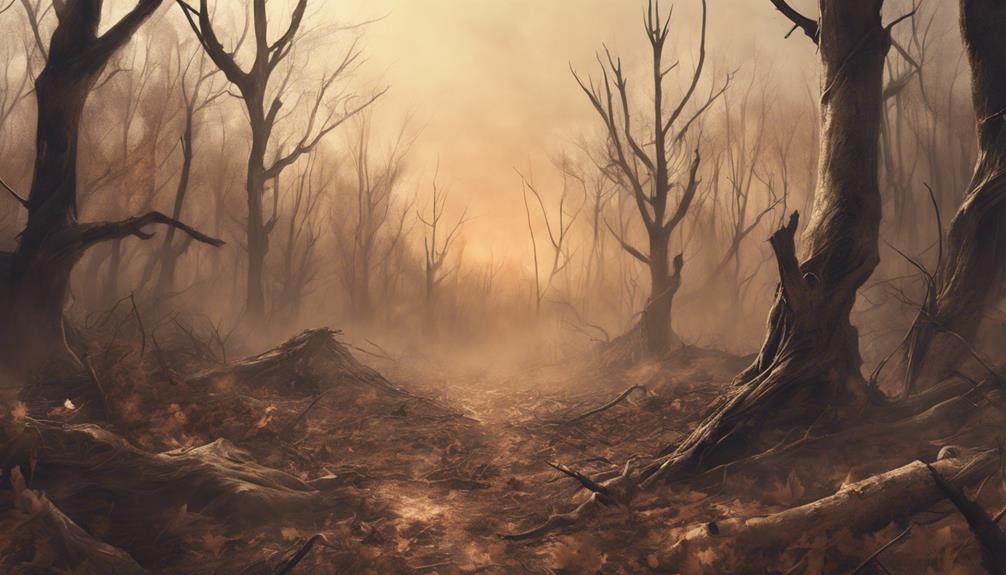Wildfires, a devastating force of nature, often raise questions about their origins and causes. Understanding how wildfires start is crucial for mitigating their destructive impacts. Whether ignited by natural phenomena like lightning strikes or human activities such as discarded cigarettes, the intricate interplay of fuel, heat, and oxygen is a critical factor in the initiation and spread of these infernos. By unraveling the complexities of wildfire ignition, we gain insight into strategies for prevention and management.
Key Takeaways
- Wildfires start due to natural causes like lightning strikes and human activities such as unattended campfires.
- Human behavior contributes to 85-90% of wildfires, highlighting the need for responsible fire prevention practices.
- Climate change and arid conditions create ideal environments for wildfires to ignite and spread.
- Understanding the interplay of fuel, heat, and oxygen is crucial for wildfire prevention and management.
Impact of Wildfires
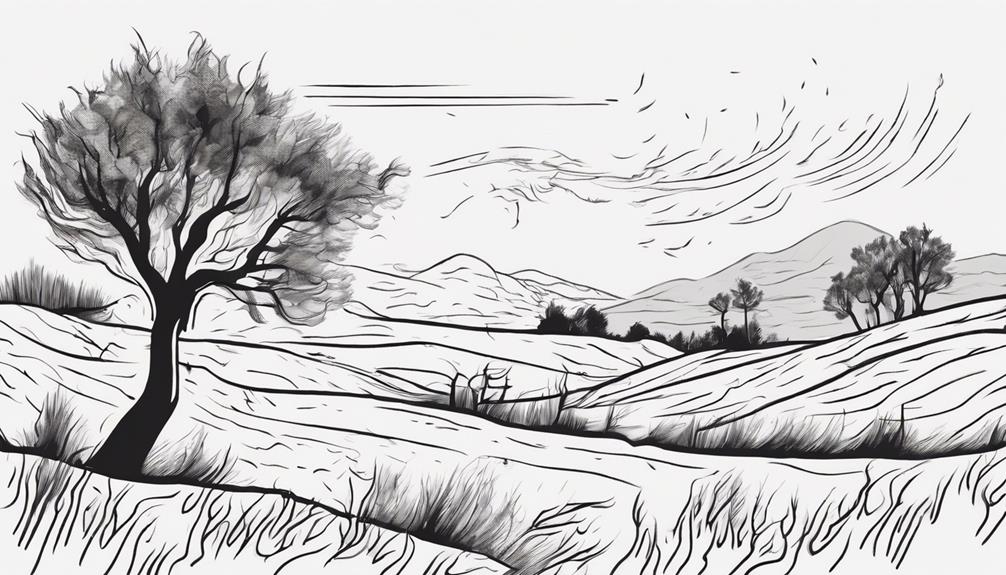
The Impact of Wildfires is profound, affecting ecosystems, economies, and public health on a significant scale. Wildfire risk poses a formidable threat to ecosystems worldwide, leading to the destruction of habitats and the loss of biodiversity. The ecological impact of wildfires is vast, with billions of wildlife fatalities and long-lasting disruptions to natural systems. These events can trigger soil erosion, alter water quality, and change landscapes for years to come.
Moreover, the economic impact of wildfires is staggering, with damages soaring into the hundreds of billions of dollars. Costs include firefighting efforts, property damage, loss of tourism revenue, and expenses related to rehabilitation and reconstruction. These financial burdens can place significant strain on local and national economies, requiring substantial resources to recover from the aftermath of such disasters.
In addition to the ecological and economic consequences, wildfires also pose serious health risks to the public. Smoke and pollutants released during wildfires can lead to respiratory issues, exacerbate pre-existing conditions, and have long-term implications for public health. Addressing the multifaceted impacts of wildfires is crucial in safeguarding both the environment and human well-being.
Are Wildfires Getting Worse?
The escalation of wildfires is a concerning global trend that aligns with the impacts of climate change. Rising temperatures and prolonged dry periods create favorable conditions for wildfires to become more severe and frequent. Understanding these patterns is crucial for implementing effective strategies to mitigate the increasing risk posed by wildfires.
Worsening Wildfire Trends
Evidence suggests a concerning escalation in wildfire trends, indicating a rise in frequency, burnt land area, and displaced populations. The interaction of various factors such as climate change, unattended campfires, and human activities in forested areas contributes significantly to the worsening wildfire situation globally. Climate change plays a pivotal role, creating conditions with higher temperatures and increased aridity, which are conducive to the ignition and rapid spread of wildfires. Drought further exacerbates this scenario by drying out vegetation, turning forests into tinderboxes. Additionally, human activities, including arson and irresponsible campfire practices, act as catalysts for the severity of wildfires, amplifying the impact on communities and ecosystems. Understanding these worsening wildfire trends is crucial for implementing effective prevention and mitigation strategies.
Impact of Climate
Indisputably, the impact of climate change on wildfires manifests in the escalating frequency and severity of these natural disasters. With higher temperatures and prolonged droughts, the conditions for fire ignition and spread have become ideal. The Forest Service is facing more destructive and challenging fire seasons globally due to climate change. Hotter and drier conditions dry out vegetation, turning it into flammable material that is more susceptible to ignition. This leads to longer fire seasons and more intense wildfires, making fire management and containment efforts increasingly difficult. Climate change exacerbates wildfire risks by favoring fire growth and hindering control and extinguishing efforts.
| Climate Change Impact on Wildfires | |
|---|---|
| Higher temperatures and prolonged droughts | Ideal conditions for fire ignition and spread |
| Hotter and drier conditions | Dry out vegetation, increasing flammability |
| Longer fire seasons and more intense wildfires | Pose challenges for fire management |
| Exacerbates wildfire risks | Makes control and extinguishing efforts harder |
| Escalating frequency and severity of wildfires | Direct result of climate change |
Where Wildfires Occur
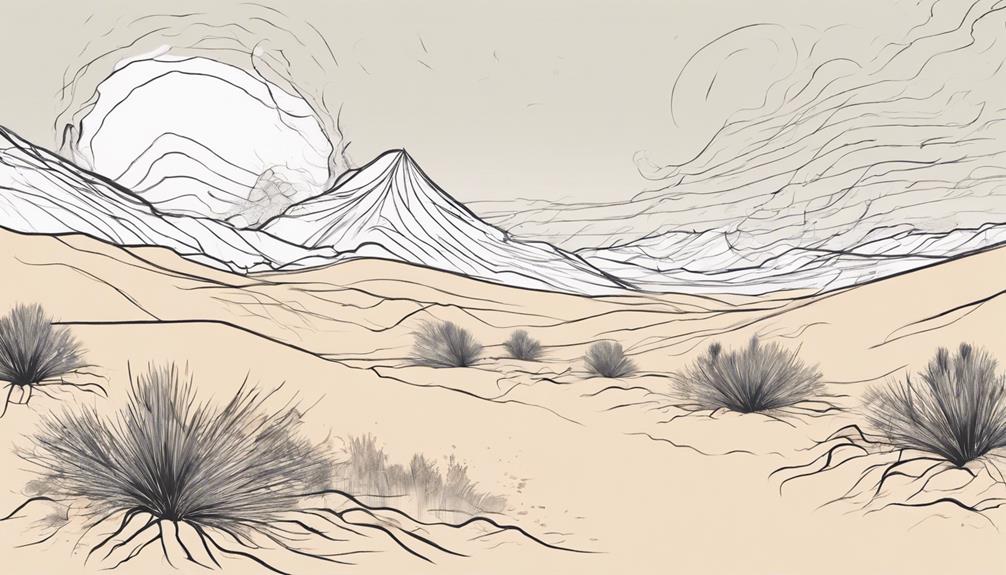
Wildfires tend to occur in regions characterized by dry climates, abundant vegetation, and a history of previous fire incidents. The Western United States, Australia, Mediterranean Europe, the Amazon Rainforest, Siberia, Russia, and Southeast Asia are among the common wildfire-prone areas. Factors like drought, high temperatures, and the presence of flammable vegetation play a crucial role in determining the likelihood of wildfires in these regions.
Wildfire Geographic Hotspots
In regions characterized by dry climates and lush vegetation, wildfires frequently occur due to a combination of high temperatures, drought conditions, and flammable plant life. The United States is one of the fire-prone areas where naturally occurring wildfires are common. Other geographic hotspots include Australia, Mediterranean Europe, the Amazon Rainforest, Siberia, Russia, and Southeast Asia. These regions experience ideal conditions for wildfires to ignite and spread, exacerbated by climate change. Factors like dry vegetation, hot weather, and human activities contribute to the increased frequency and severity of wildfires. Effective prevention and management strategies are essential to combat the growing wildfire threat in these areas.
| Geographic Hotspots | Characteristics | Contributing Factors |
|---|---|---|
| United States | Dry climate, abundant vegetation | High temperatures, human activities |
| Australia | Hot and dry conditions, flammable plants | Drought, lightning strikes |
| Mediterranean Europe | Warm climate, dense vegetation | Dry summers, strong winds |
| Amazon Rainforest | Humid environment, diverse vegetation | Deforestation, slash-and-burn agriculture |
High-Risk Areas
Regions characterized by dry climates and an abundance of vegetation are commonly identified as high-risk areas where wildfires frequently occur. High temperatures, combined with factors like drought and flammable vegetation, create ideal conditions for wildfires to ignite and spread rapidly in these regions. The Western US, Australia, Mediterranean Europe, Amazon Rainforest, Siberia, Russia, and Southeast Asia are known for experiencing wildfires due to these factors. Historical fire patterns also play a role in making these areas more susceptible to wildfires. Climate change further intensifies the risk by altering weather patterns and increasing the frequency and severity of wildfires. Effective prevention and management strategies are crucial in mitigating the impact of wildfires in these high-risk areas globally.
Environmental Factors
Areas characterized by dry climates, abundant vegetation, and a history of fire activity are prime locations where wildfires commonly occur. These environmental factors create conditions conducive to the ignition and spread of wildfires. Regions such as the Western US, Australia, Mediterranean Europe, the Amazon Rainforest, Siberia, Russia, and Southeast Asia are known for their susceptibility to wildfires due to these factors. Factors like drought, high temperatures, and the presence of flammable vegetation play a crucial role in the occurrence and intensity of wildfires. Additionally, human activities such as land-use changes, deforestation, and inadequate fire management practices contribute to the increased risk of wildfires in these regions. Climate change further exacerbates these conditions, leading to more frequent and severe wildfires globally.
Natural Causes of Wildfire Ignition
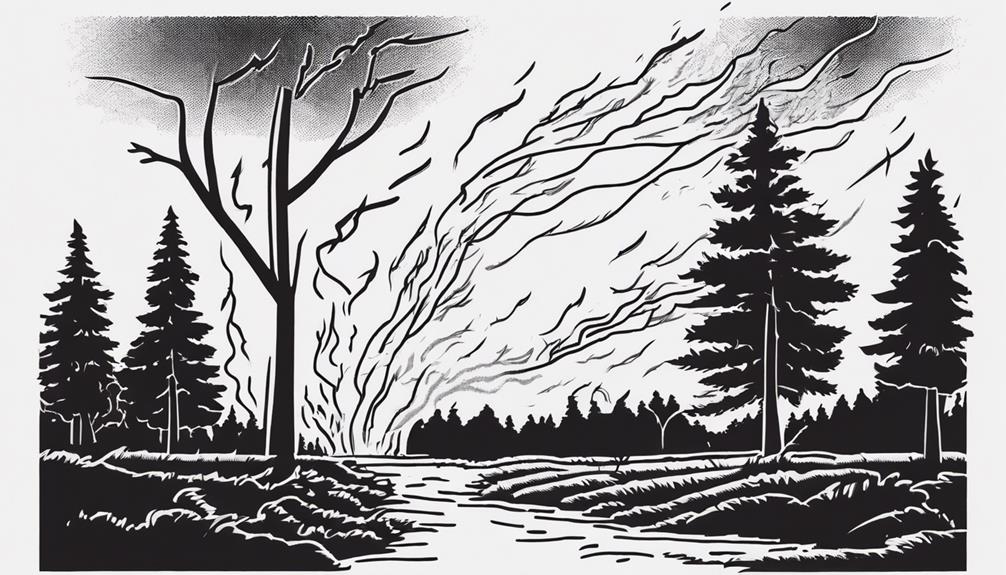
Wildfires can be initiated by various natural phenomena, including lightning strikes, solar heat exposure, volcanic eruptions, and spontaneous combustion. These natural causes of wildfire ignition highlight the diverse ways in which fires can start without human intervention. Some key points to consider include:
- Lightning Strikes: Account for a significant portion of wildfire ignitions, as the electrical discharge can easily ignite dry vegetation.
- Solar Heat Exposure: The sun's heat can dry out vegetation, creating ideal conditions for combustion and potentially leading to wildfires.
- Volcanic Eruptions: Hot lava and embers ejected during volcanic eruptions can ignite surrounding vegetation, sparking wildfires.
- Spontaneous Combustion: Heat buildup in organic materials can reach a point where spontaneous combustion occurs, igniting wildfires.
- Prevention and Management: Understanding these natural causes is crucial for developing effective wildfire prevention and management strategies to mitigate their impact on ecosystems and communities.
Human Role in Sparking Wildfires
Human activities play a significant role in the ignition of wildfires, with nearly 85-90% of such incidents attributed to factors linked to human behavior rather than natural causes. Unattended wildfires, discarded cigarettes, burning debris, and equipment malfunctions are common human-related causes of wildfires. Data spanning from 2000 to 2017 underscores the prevalence of human-caused fires in the wildfire landscape, highlighting the need for increased awareness and preventive measures. Western states like California and Hawaii are particularly susceptible to wildfires sparked by human actions due to factors such as dry conditions and high temperatures. Recognizing the human impact on wildfires is crucial for developing effective management strategies and mitigation efforts. By understanding the role humans play in starting wildfires, authorities can work towards reducing the frequency and severity of these disasters through education, enforcement of fire safety regulations, and community involvement in fire prevention initiatives.
Arson as a Cause
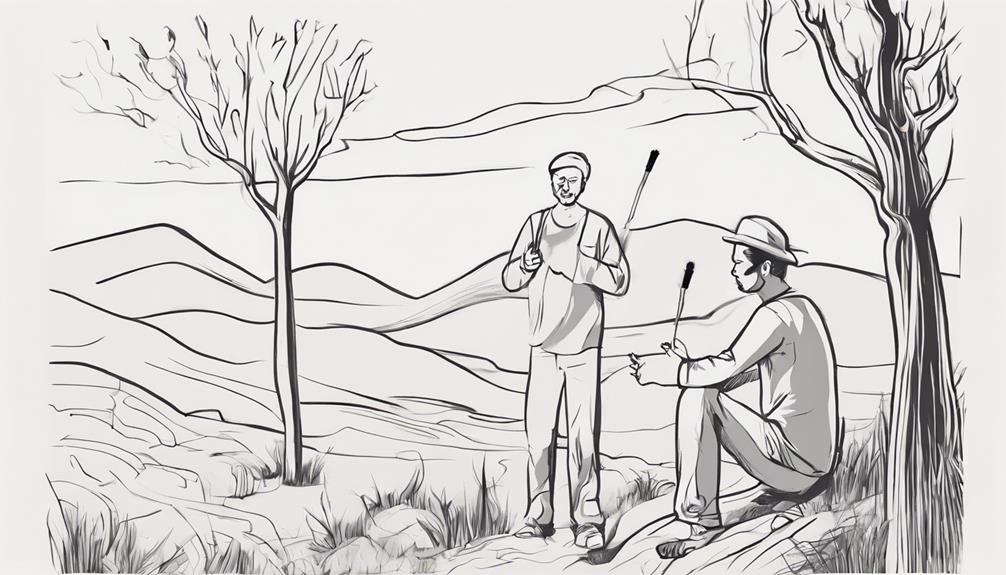
Arson, a deliberate act of setting fires, poses a significant threat to forests and communities, contributing to a notable percentage of wildfire incidents.
- Arson is a significant cause of wildfires, accounting for a notable percentage of fire incidents.
- Deliberate setting of fires by individuals is considered arson and poses a severe threat to forests and communities.
- Arsonists may ignite fires for various reasons, including vandalism, revenge, or financial gain.
- Arson-related wildfires result in property damage, loss of wildlife, and endangerment of human lives.
- Efforts to prevent and combat arson-related wildfires involve public awareness, law enforcement, and strict penalties for offenders.
Arson-related wildfires not only result in immediate destruction but also have long-lasting environmental and societal impacts. Understanding the motives behind arson and implementing effective prevention strategies are crucial in safeguarding against the devastating effects of intentionally set fires. By raising awareness, enforcing laws, and promoting responsible land management practices, the risks associated with arson can be mitigated, ultimately protecting our natural landscapes and communities.
Unattended Campfires
Negligence in supervising campfires has been identified as a significant factor contributing to the occurrence of wildfires. Campfires left unattended pose a considerable risk, often leading to destructive wildfires. Human activities, particularly the failure to properly extinguish campfires, play a crucial role in the ignition of these wildfires. Data consistently point to unattended campfires as a common trigger for such incidents, emphasizing the need for responsible fire management practices.
When campfires are not adequately supervised or extinguished, they can easily spread beyond control, igniting dry vegetation and causing wildfires to erupt. The preventable nature of these incidents underscores the importance of understanding the risks associated with leaving campfires unattended. By recognizing the potential consequences of such negligence, individuals can take proactive measures to ensure campfires are properly managed and extinguished, thereby reducing the likelihood of wildfires. Responsible behavior when dealing with campfires is essential in safeguarding natural environments and preventing the devastation caused by wildfires.
Burning Debris Incidents
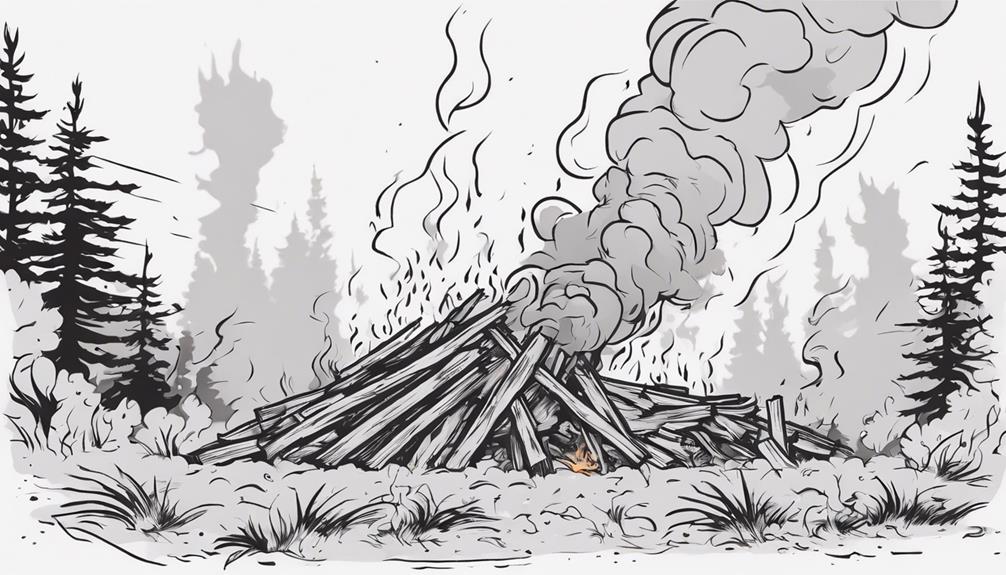
Burning debris incidents, often stemming from improperly managed outdoor burning or disposal of waste, present a significant risk factor for the ignition of wildfires. These incidents can be natural, but human activities play a major role in causing them. Improperly extinguished debris fires can easily escalate, leading to the burning of significant acres of land. In 2020 alone, approximately 2,000 wildfires in the U.S. were caused by burning debris, resulting in substantial property damage and environmental harm. Burning debris without proper permits or in restricted areas not only increases the risk of wildfires but can also have legal consequences for those responsible. To mitigate this risk, it is crucial for individuals to educate themselves on safe debris burning practices and strictly adhere to local regulations. Preventing wildfires caused by burning debris requires awareness, responsibility, and a commitment to following established guidelines.
Equipment and Machinery Sparks
Sparks originating from equipment and machinery present a significant threat in igniting wildfires, particularly in areas with dry vegetation. Machinery such as chainsaws, power tools, and vehicles can produce sparks that serve as ignition sources in highly flammable environments. The heat generated by equipment coming into contact with rocks or metal can easily start fires when surrounded by dry vegetation. Improper maintenance or operation of machinery, including poorly maintained exhaust systems, heightens the risk of sparks leading to wildfires.
In California, a considerable percentage of human-caused wildfires each year are attributed to equipment use. To mitigate the risk of wildfires from equipment sparks, various preventative measures can be implemented. These include clearing debris from equipment, using spark arresters to prevent the escape of sparks, and closely monitoring machinery in fire-prone areas. By adhering to these practices, the potential for equipment-related sparks to ignite wildfires can be minimized effectively.
Discarded Cigarettes Influence
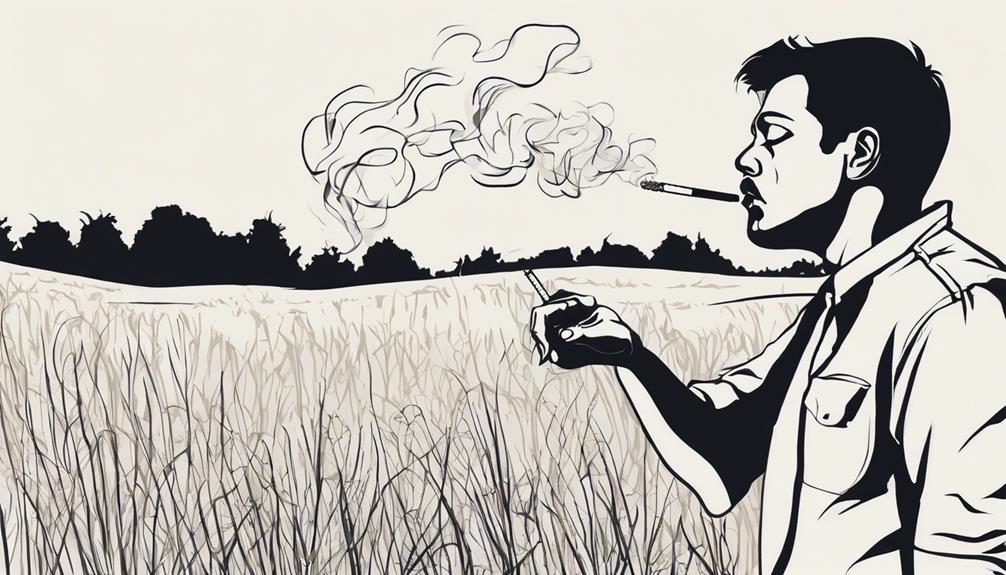
Improperly discarded cigarettes pose a significant risk as they can serve as ignition sources for wildfires. The smoldering end of a cigarette can easily ignite dry vegetation, especially in hot and dry conditions. To mitigate this danger, it is crucial for individuals to adhere to proper disposal practices and ensure cigarettes are fully extinguished before disposal.
Cigarette Butt Dangers
Discarded cigarette butts pose a significant wildfire risk, particularly in dry and windy environments.
- Cigarettes can remain lit and ignite surrounding dry vegetation, leading to wildfire outbreaks.
- Improperly extinguished cigarettes can smolder for hours before igniting nearby flammable materials.
- Research shows that cigarette butts are responsible for a significant number of human-caused wildfires.
- Proper education about the dangers of discarding cigarette butts can help prevent wildfires.
- It is crucial for individuals to properly extinguish and dispose of cigarette butts to reduce the risk of starting wildland fires.
Ignition Source Risk
Cigarettes, when not properly extinguished, present a significant risk as an ignition source for wildfires, contributing substantially to human-caused fire incidents. Discarded cigarettes have been identified as a common cause of wildfires due to their ability to smolder and ignite dry vegetation. The prolonged smoldering of cigarettes can easily spark fires, particularly in forested areas during dry and windy conditions. Research indicates that a notable proportion of wildfires have been initiated by improperly disposed of cigarettes, underscoring the importance of responsible cigarette disposal practices. To mitigate this risk, it is essential for individuals to be aware of the potential consequences of careless cigarette disposal and to adopt proper extinguishing methods. Preventing wildfires caused by cigarettes demands vigilance and adherence to safe disposal protocols.
Fire Prevention Measures
The prevention of wildfires caused by human activities necessitates a comprehensive approach that incorporates targeted measures to address the specific risks associated with the improper disposal of potential ignition sources.
- Implement strict penalties for littering and improper disposal of cigarettes in high-risk areas.
- Conduct public awareness campaigns highlighting the dangers of discarding cigarettes in nature.
- Enforce designated smoking areas with proper disposal facilities to reduce the risk of wildfires.
- Increase patrols and surveillance in fire-prone regions to deter irresponsible behavior.
- Collaborate with local communities and authorities to promote responsible fire prevention practices and ensure compliance with regulations.
Climate Change and Wildfires
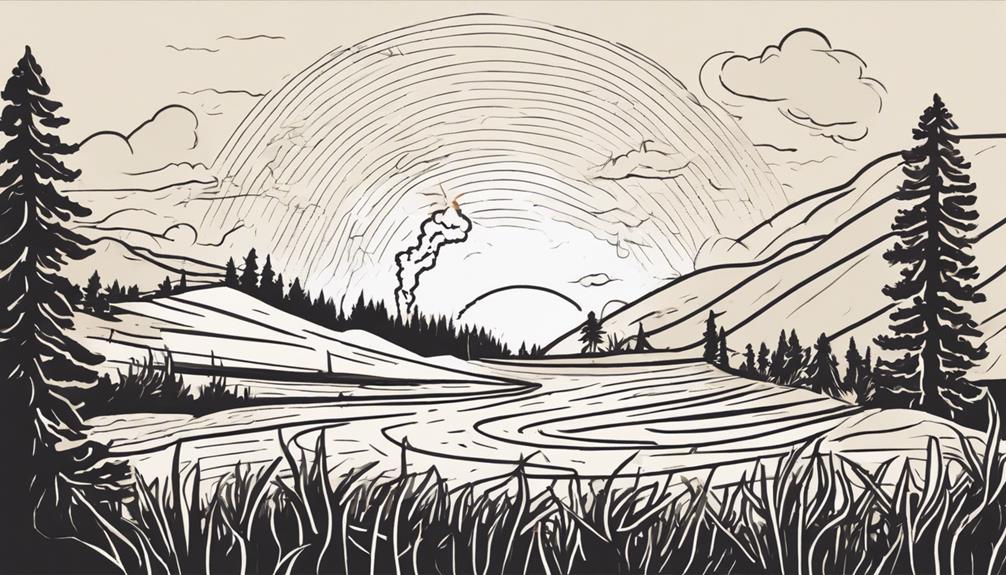
Climate change plays a significant role in the increased frequency and intensity of wildfires due to its impact on temperatures and vegetation dryness. As global temperatures rise, the environment becomes drier, creating favorable conditions for wildfires to ignite and spread. Longer wildfire seasons and more extreme fires are direct consequences of this warming trend. Droughts, intensified by climate change, desiccate vegetation, turning it into fuel for fires and facilitating rapid fire propagation. Additionally, wildfires exacerbated by climate change release substantial amounts of carbon dioxide into the atmosphere, further exacerbating global warming in a dangerous feedback loop.
Understanding the intricate relationship between climate change and wildfires is paramount for developing effective prevention and mitigation strategies. By recognizing the influence of climate change on wildfire behavior, policymakers, land managers, and communities can implement measures to reduce the risk of catastrophic wildfires. This awareness underscores the importance of proactive steps to address climate change and its profound impact on wildfire dynamics.
Frequently Asked Questions
How Does a Wildfire Start Naturally?
Natural ignition of wildfires occurs through various means, with lightning strikes and spontaneous combustion being common triggers. Lightning strikes, particularly in dry conditions, can superheat the air and ignite nearby flammable materials. When dry vegetation is hit by lightning, the intense heat can quickly start a fire. Understanding these natural processes is crucial for developing effective strategies to prevent and manage wildfires, especially in areas prone to drought and dry weather conditions.
How Did the Wildfire Start?
In understanding how wildfires start, we analyze various factors such as human activity, natural causes like lightning, and the importance of prevention measures. Climate change impacts weather conditions, influencing ignition sources. Controlled burns aid in managing fuel loads. Arson investigations play a role in determining malicious intents. Firefighting techniques encompass a range of strategies to combat wildfires effectively. This comprehensive approach is essential in addressing the complexities of wildfire origins.
What Are the Main Causes of a Wildfire?
Wildfires can originate from natural causes like lightning strikes or human-induced factors such as arson and human negligence. Human activities, including unattended campfires, discarded cigarettes, and intentional fire setting, contribute significantly to wildfire occurrences. Arson poses a deliberate threat, while human negligence through activities like equipment malfunctions or burning debris can inadvertently ignite fires. Understanding these main causes is crucial for wildfire prevention and mitigation strategies.
What Is the Most Common Way for a Wildfire to Start?
Understanding the primary factors leading to wildfire ignition is essential for effective prevention and mitigation strategies. Human activities, such as unattended campfires and discarded cigarettes, account for a significant majority of wildfires. Lightning strikes also play a crucial role in natural fire starts. Additionally, favorable climate conditions like dryness and heat further contribute to the spread of wildfires. Recognizing these common triggers is paramount in addressing the prevalence of wildfires and safeguarding communities and ecosystems.
Conclusion
In conclusion, wildfires can start through natural causes or human activities, with factors such as fuel composition, weather conditions, and topographical features playing a significant role in their ignition and spread. While efforts are being made to prevent and manage wildfires, climate change continues to exacerbate these incidents. Despite challenges, understanding the causes and elements involved is crucial for effective wildfire prevention strategies. Anticipating objections, one may argue that wildfires are a natural part of ecosystems, but their increasing frequency and intensity warrant proactive measures to mitigate their destructive impact.
